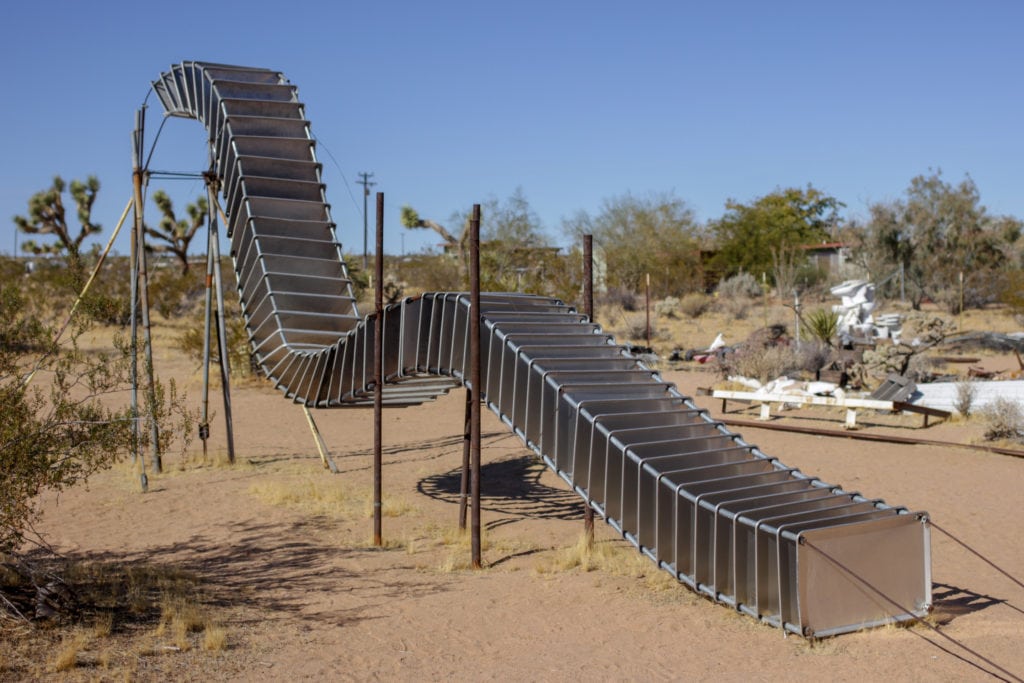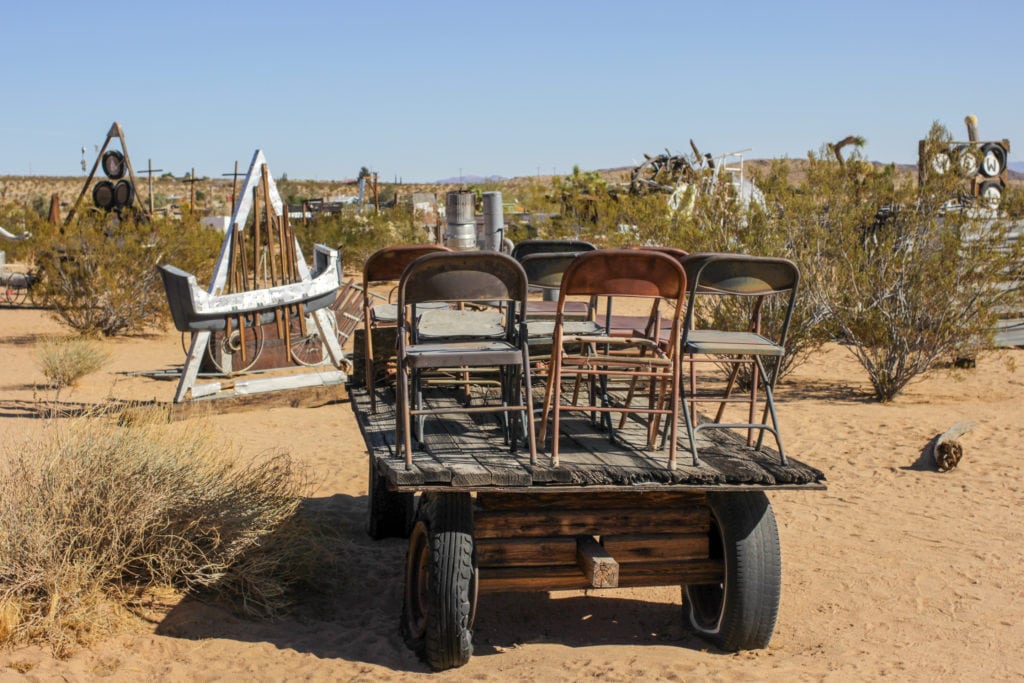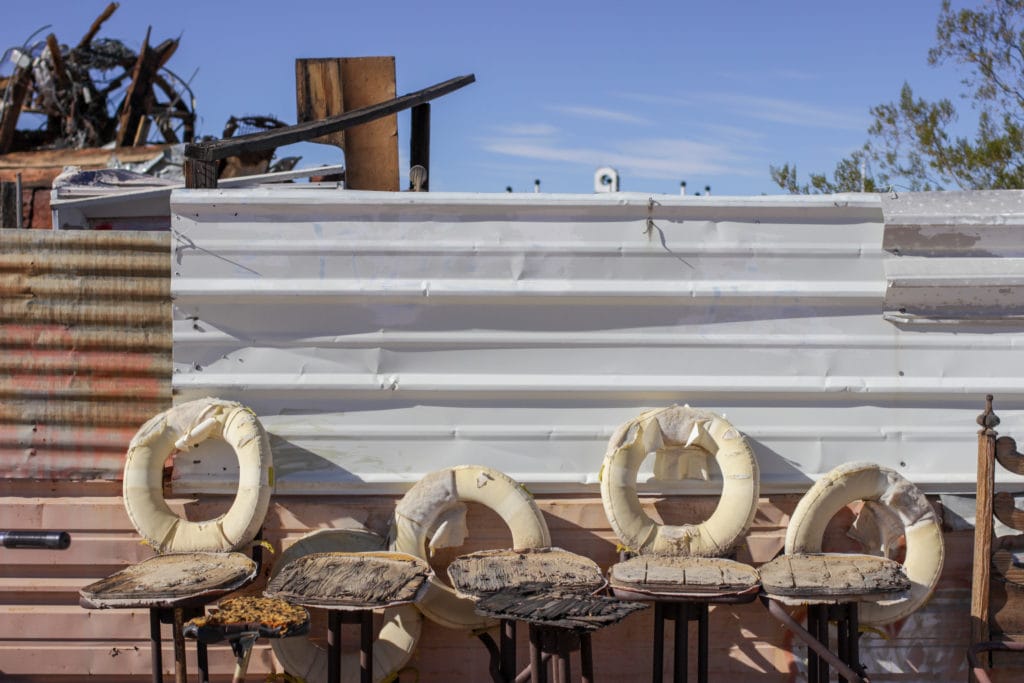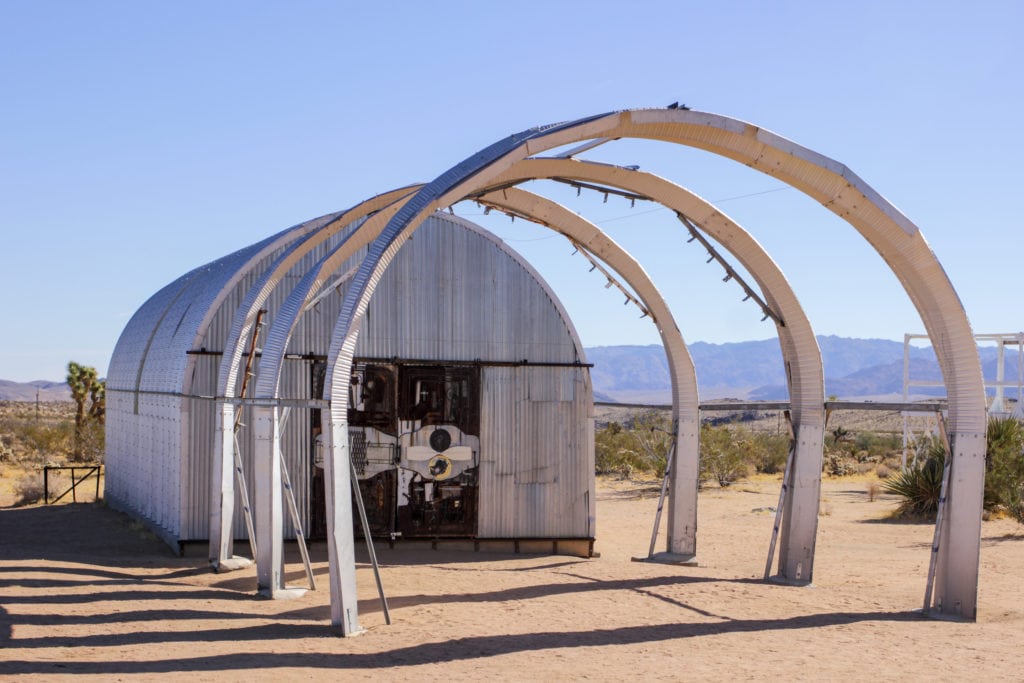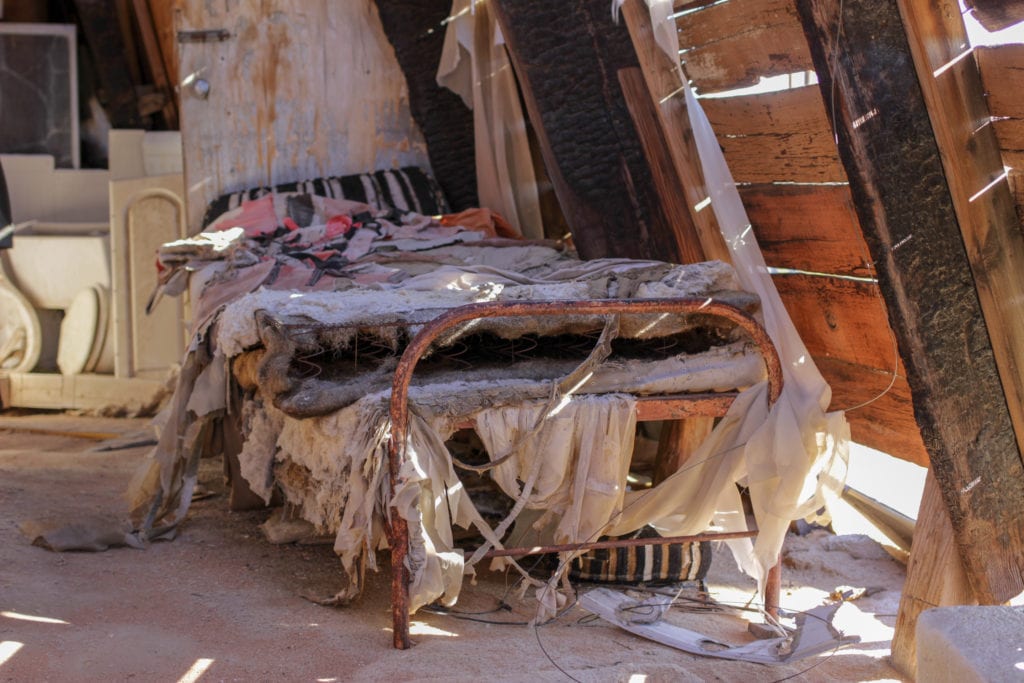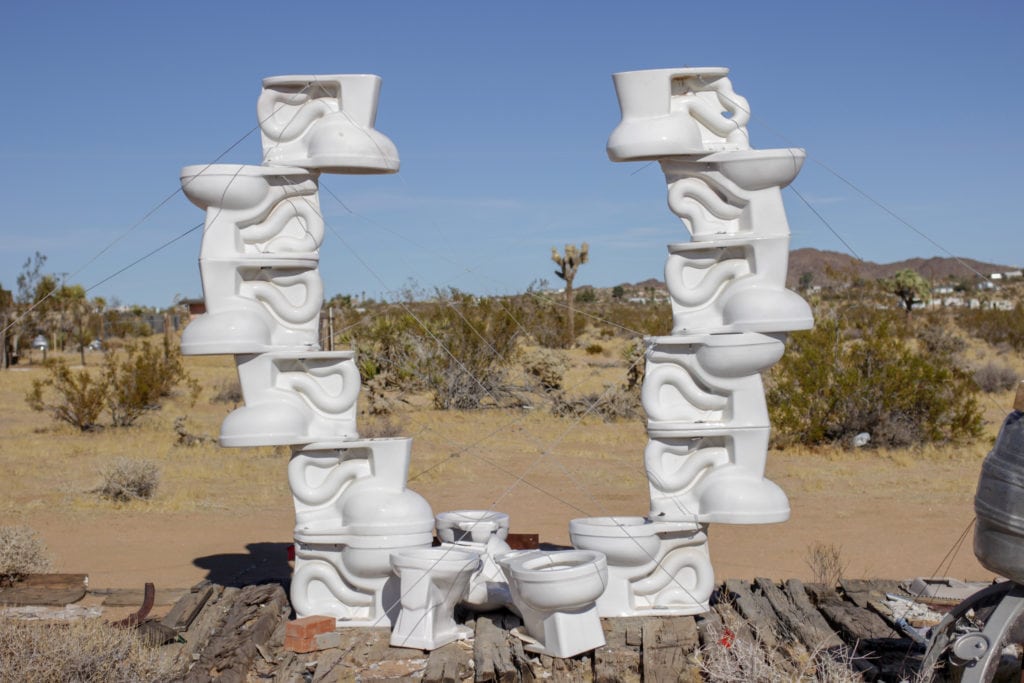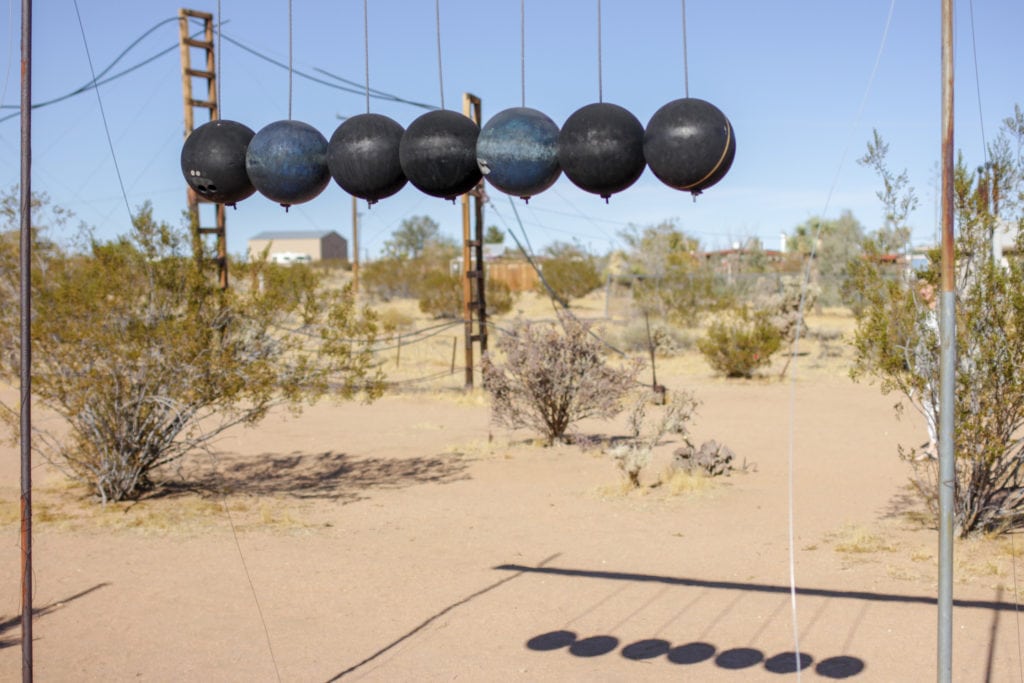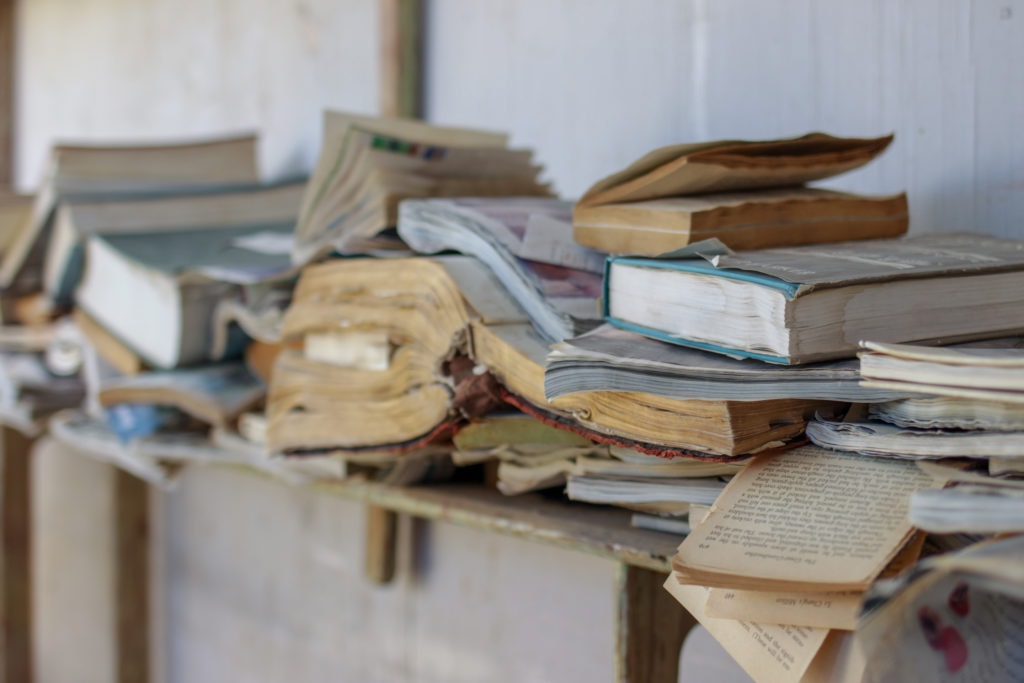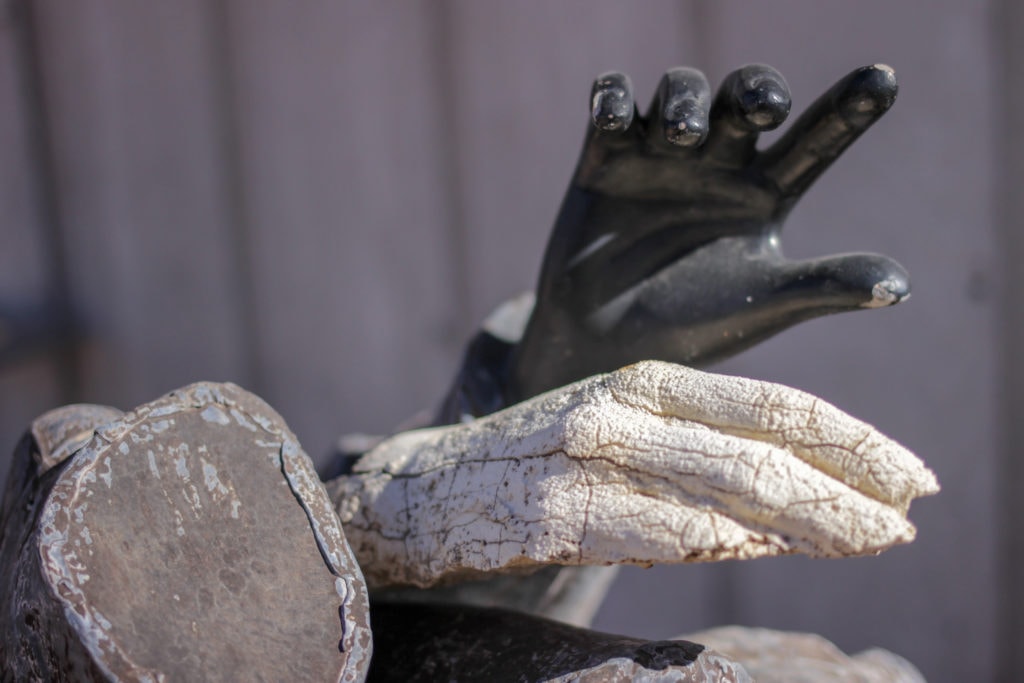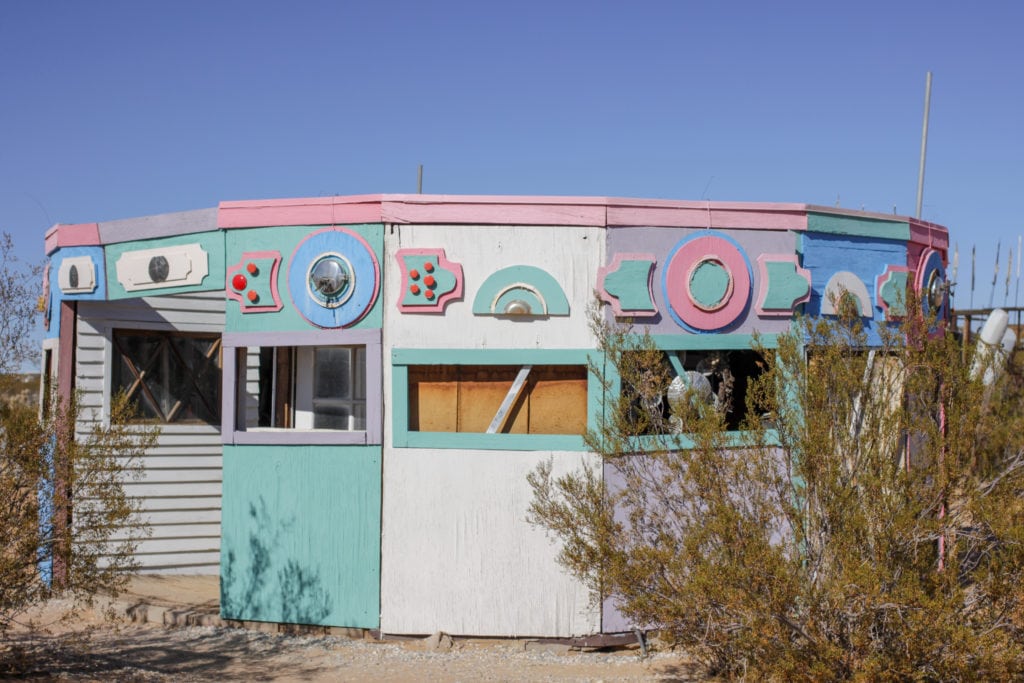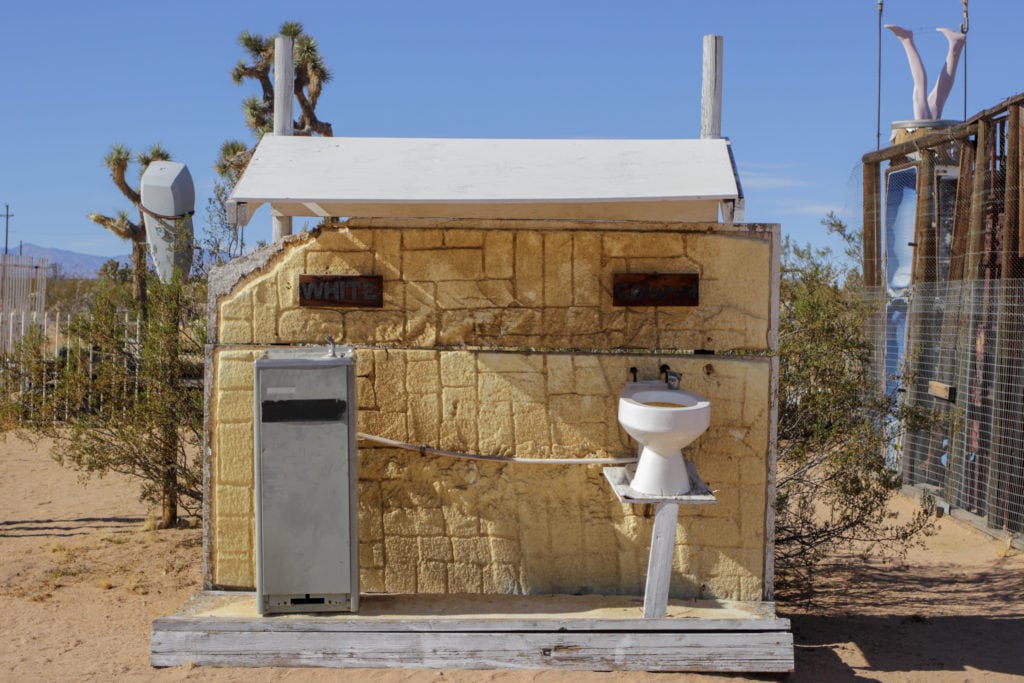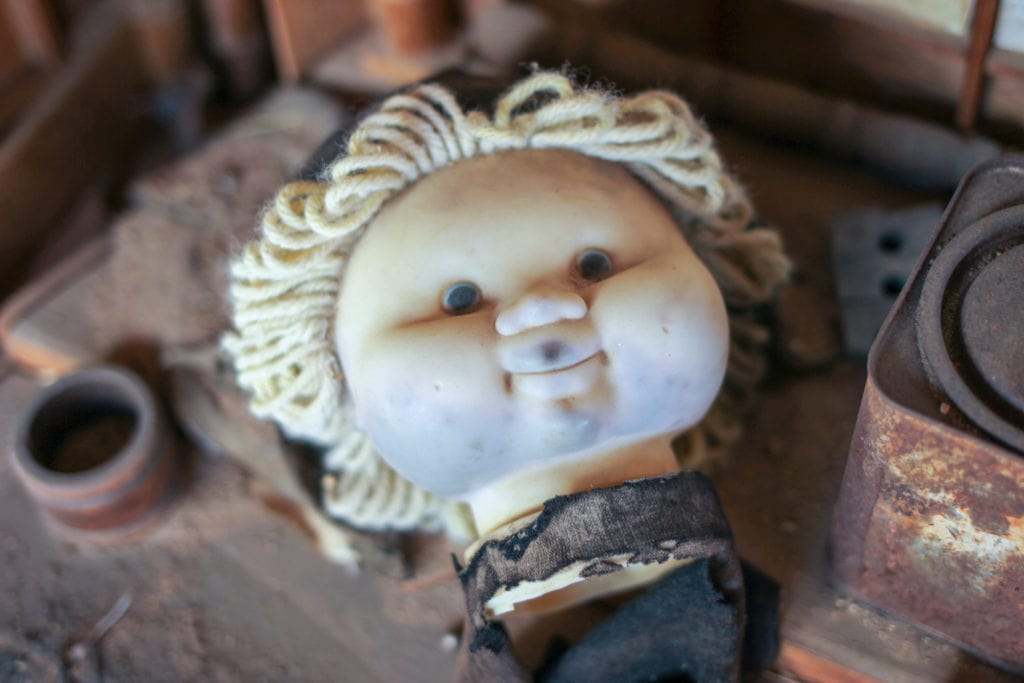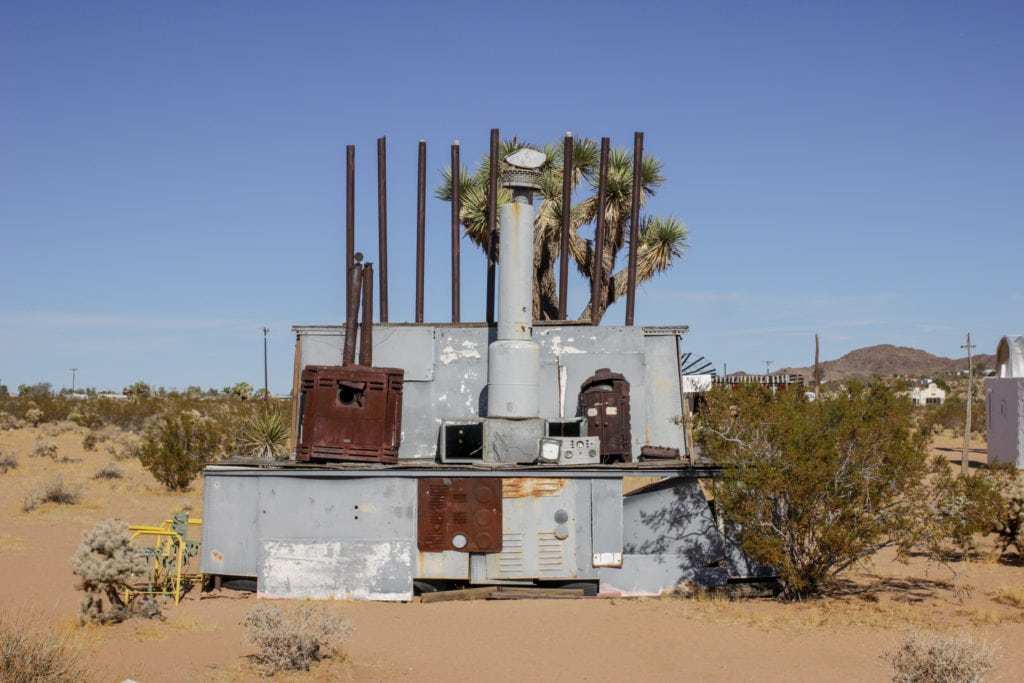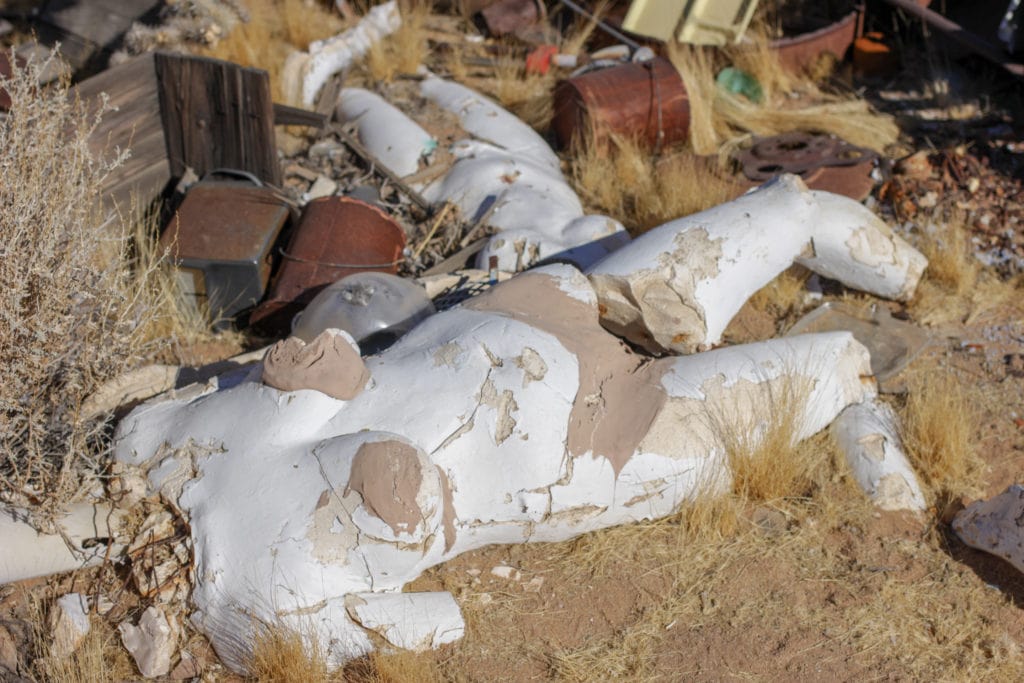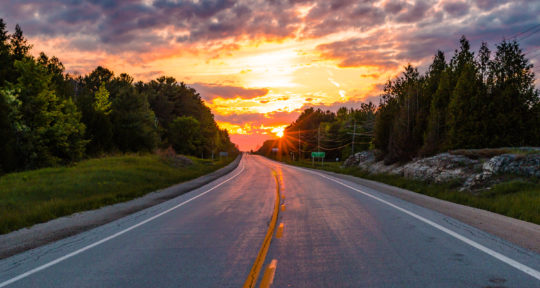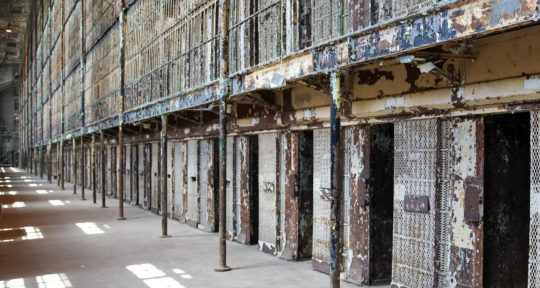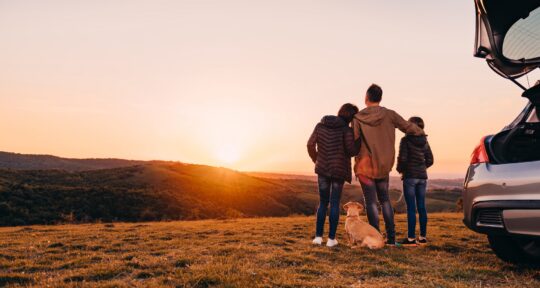A path of small stones half-buried in the desert sand leads to an unusual structure: a white, ramshackle platform perched several feet above the ground. A high skeletal tower rises from the center surrounded by a perimeter of wooden bed posts, like an upside-down gazebo. This cacophonous art piece is called “The White House.” A small staircase beckons visitors to climb into its mostly white interior.
Built by fine artist Noah Purifoy in 1993, “The White House” is one of the centerpieces of his Outdoor Desert Museum of Assemblage Sculpture. Purifoy left Los Angeles in 1989 for an undeveloped area of unincorporated San Bernardino County near Joshua Tree National Park. He lived in the desert in a small trailer on two acres and began to build sculptures until his death in 2004.
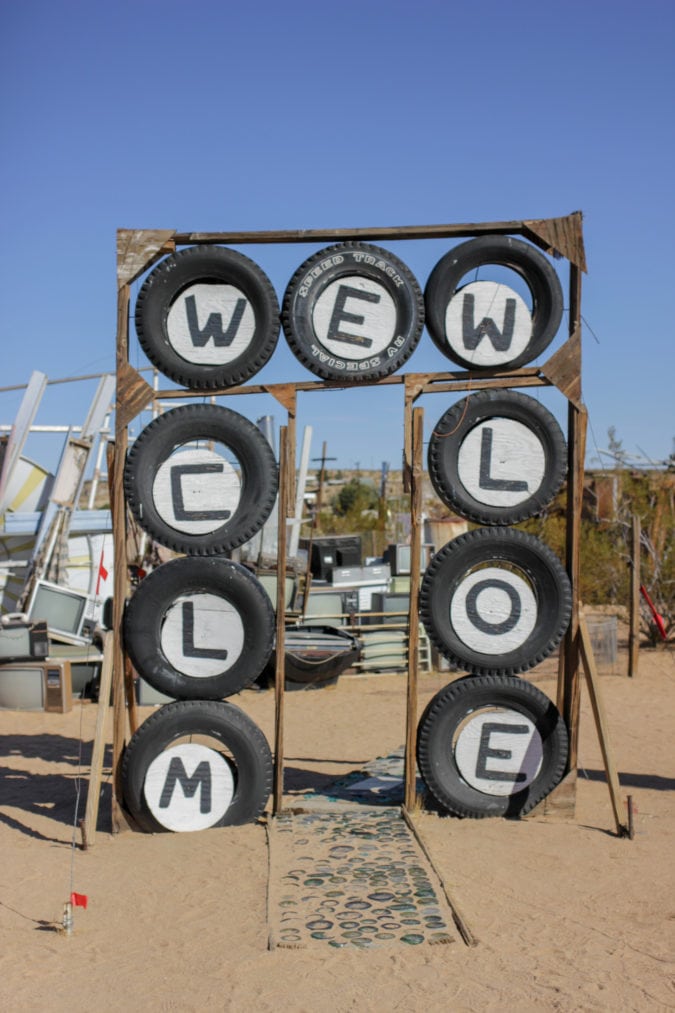
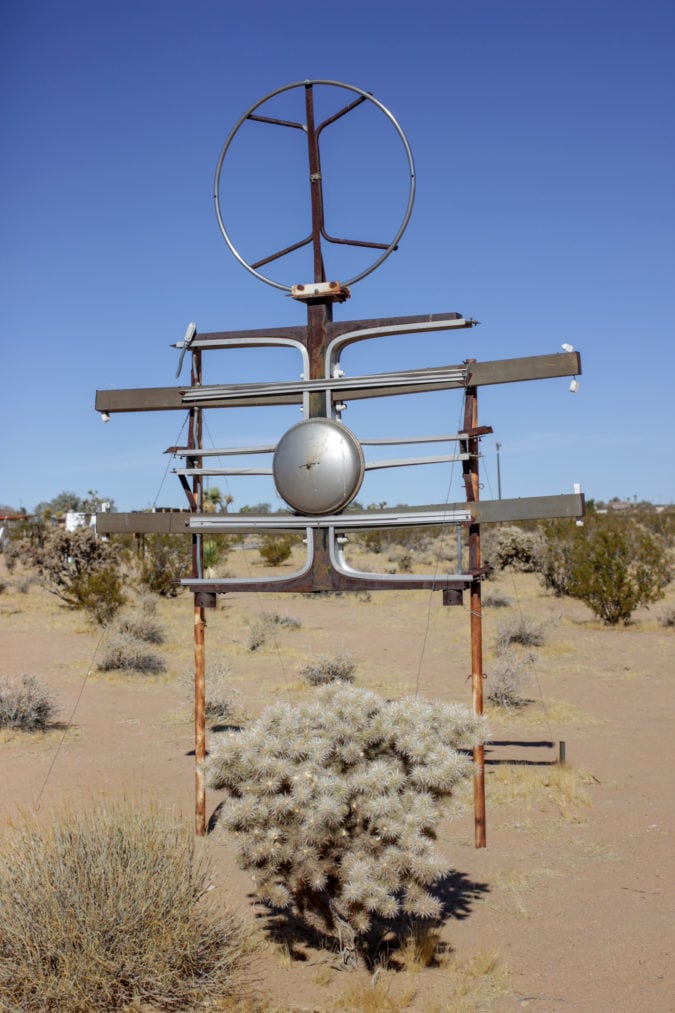
The art pieces are made from discarded objects Purifoy found and collected from the surrounding desert, and some rise higher than any nearby man-made structure. With few straight lines and almost no right angles, the artist’s work—whether it’s a sculpture, a tower, or a stack—reaches upwards. Much of Purifoy’s work resembles the famous Joshua trees that dot this part of the Mojave desert: spiky, twisty, asymmetrical, and tall.
“When you walk up to an elevated piece like ‘The White House,’ you have a certain vista over what is in front of it,” says Sue Welsh, Purifoy’s longtime friend and colleague. “He worked with the desert landscape as it was, and he was a steward of it, retaining the natural features, the vegetation, the wildlife burrowing or passing through.”
“65 Aluminum Trays.” | Photo: Alexandra Charitan “Bandwagon.” | Photo: Alexandra Charitan A line of chairs. | Photo: Alexandra Charitan “Quonset Gallery.” | Photo: Alexandra Charitan A tattered bed. | Photo: Alexandra Charitan
An open world of art to explore
My drive to Purifoy’s, about 20 minutes from Joshua Tree National Park, takes me off the main highway and through a rural community, using both paved and dirt roads. Friends have reported that they, in certain conditions, feared their low-chassis electric cars could not make the journey.
Hand-painted signs at key intersections direct me to “Noah’s Art Museum.” As I drive, I see small houses on big plots of land suggesting that, while the hoarding of discarded objects may be a tenet of this community, only Purifoy put his junk to any good use.
Arriving at the Outdoor Museum is a quiet affair. I park my car in one of the few dusty spots near the assemblages. The one closest to me, called “Bandwagon,” is a hand-made wooden wagon filled with folding chairs.
Toilets are common in Purifoy’s work. | Photo: Alexandra Charitan “Bowling Balls I.” | Photo: Alexandra Charitan Discarded books. | Photo: Alexandra Charitan Mannequin hands. | Photo: Alexandra Charitan
There is no one to greet me other than the distant sounds of other visitors and a pleasant desert breeze. A small station accepts donations and offers a few brief pamphlets providing biographical information about Purifoy. A sign asks visitors not to climb, mishandle, or otherwise disrespect the art. The eeriness of the museum and its unusual structures is amplified by the fact that it is unstaffed. It simply exists at the end of a dirt road in the desert.
“This is his idea,” says Welsh. “He described the openness of his museum as an unselfish act. There are no fences, and people don’t need to dress up and eat cheese and drink wine just to see art. We are honoring this idea.”
The museum is maintained to a degree, of course. The non-profit Noah Purifoy Foundation, co-founded by Welsh, keeps a headquarters at the desert site, though it is often unstaffed and locked. The volunteer organization oversees the upkeep of the artwork as well.
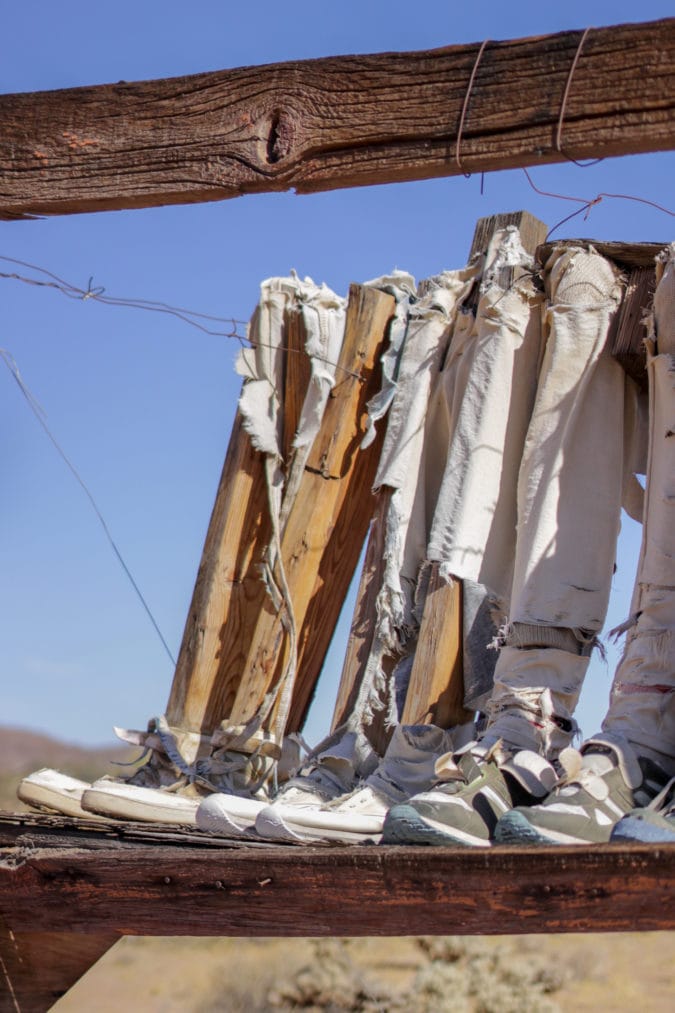
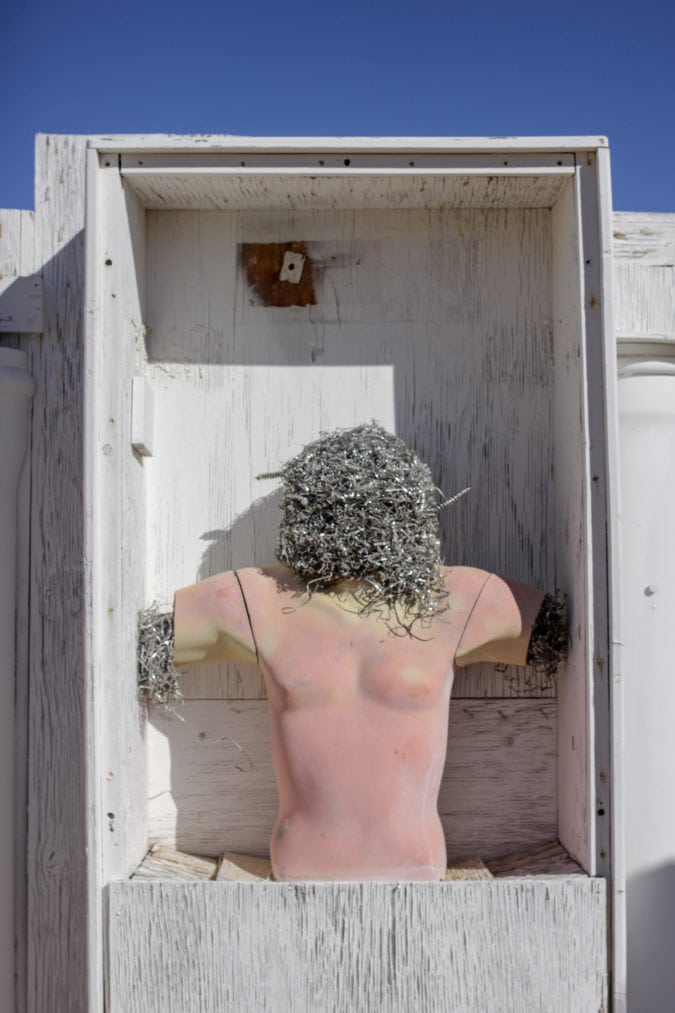
“We are careful not to use the word preserve, because Noah had a philosophical approach to the found object,” says Welsh. “We see it as refurbishing what exists, and there are those pieces that will go away. Several have already, even during the time that Noah lived.”
There is no prescribed route through the museum, so I walk from my car to where my eyes take me. Some of the larger pieces, including a fenced-off, unstable earthwork (a series of large pits lined with sheet metal and topped with catwalks), are clustered toward the parking area. Here, too, is Purfoy’s former home, a trailer that is now a storage facility.
This unguided, unfettered, and utterly available access to Purifoy’s artwork, itself sun-faded, dust-covered, and made of aged and tattered objects, is an intimate experience. The silence of the desert adds to the contemplative atmosphere. And the museum’s opening hours, from 9 a.m. until dusk, further suggest that Purifoy’s massive, gravity defying pieces are as much a part of the landscape as the natural boulder piles the area is famous for.

Deeper themes
Some of Purifoy’s work is quite humorous. Bowling balls dangle from ropes between two posts—a gigantic version of an executive’s desk toy—and nearby, two twisty towers of porcelain toilets form a sort of gateway.
Joshua Tree is a popular vacation destination, and tourists flock here to photograph the park’s spiny yucca, blooming cholla, and intricate stone formations.
Purifoy’s assemblages, with their detail, scale, and accessibility, have a similar appeal. More than 25 years after he started building his museum, Purifoy’s art is clearly still resonating with people.
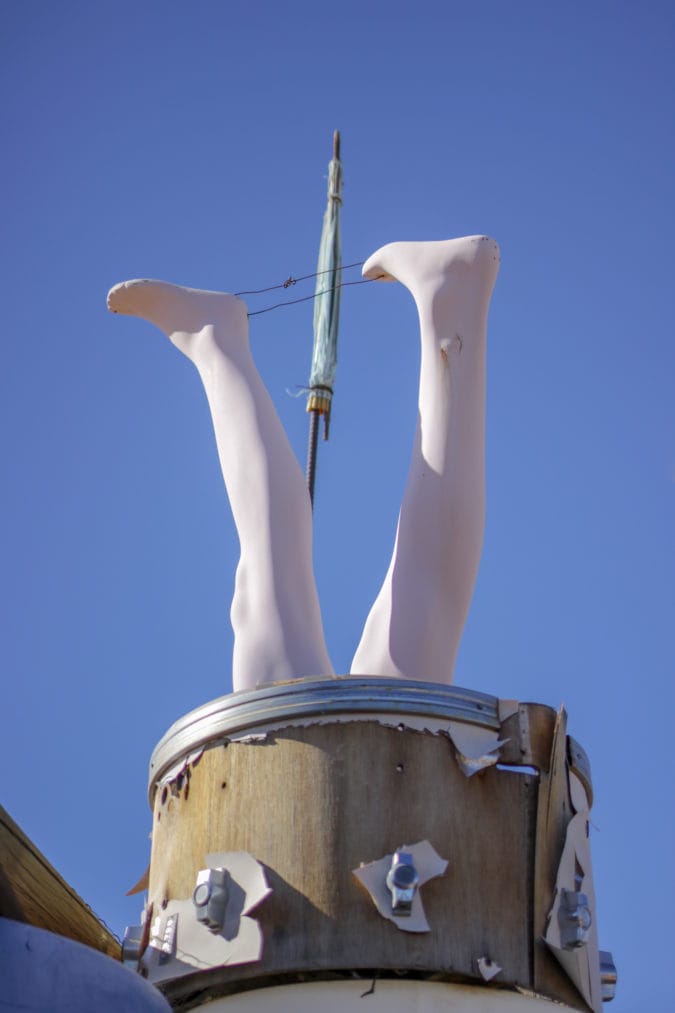
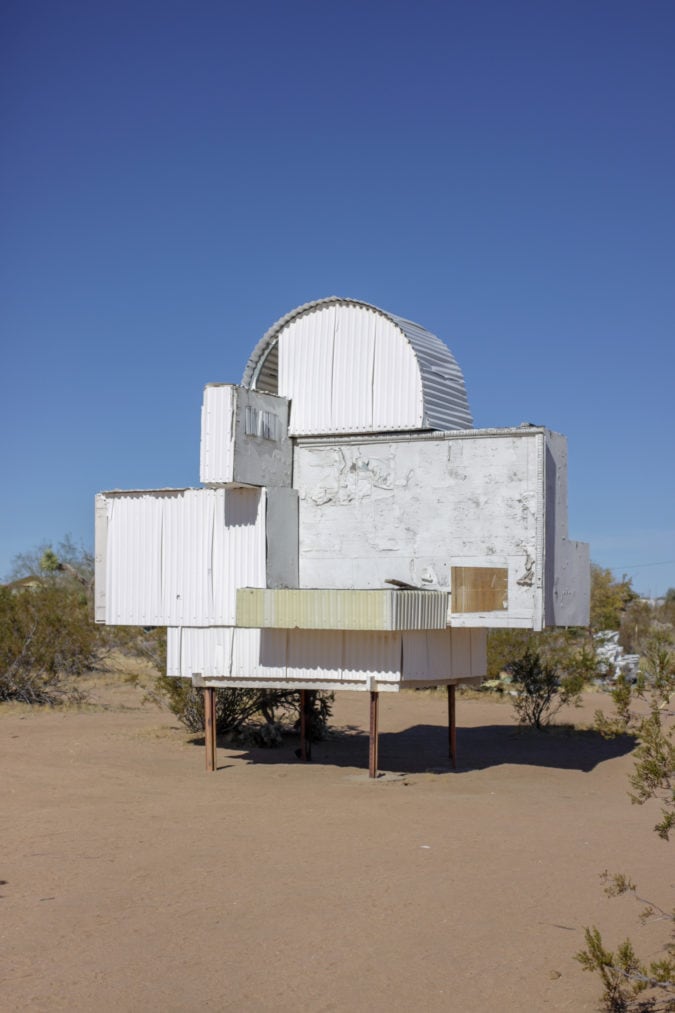
What a casual walk through the outdoor museum might not tell you is that much of Purifoy’s work has political and social underpinnings. Born in segregation-era Alabama, Purifoy, who was African-American, worked as a teacher in the Watts neighborhood of Los Angeles during the 1960s. His first assemblages used pieces of debris from the 1965 Watts Rebellion.
Toilets are also featured in Purifoy’s more cutting work, as seen in “White/Colored,” a barely hyperbolized version of the segregated water fountains he grew up with: a pristine drinking fountain for whites, next to a “separate but equal” drinking fountain for African-Americans made from a used, discolored toilet bowl.
“Noah told me that African-Americans have a lot more to be angry about than other people,” says Welsh. “But he also said that the creative process doesn’t allow you to be angry for too long. If you want to express anger through art, you can, but do it with the idea that you are going to overcome the anger.”
“Carousel.” | Photo: Alexandra Charitan “White/Colored.” | Photo: Alexandra Charitan A doll head. | Photo: Alexandra Charitan Joshua trees dot the property. | Photo: Alexandra Charitan Body parts. | Photo: Alexandra Charitan
My favorite piece at the museum is called “Carousel.” A multi-colored circular structure, reminiscent of a circus tent, stands at the edge of the property. Inside, the fun exterior gives way to dusty, cluttered chaos. At the center of the round room is an exaggerated version of a cubicle, with multiple computers stacked atop a desk. The ceiling above the desk is open to the sky, suggesting that whatever poor soul tasked with working at this desk at least has the ability to look up and dream of something bigger.
“Noah wanted to bring high art into communities where people were not exposed to the arts,” said Welsh. “He thought that everybody had creative potential.”
If you go
The Noah Purifoy Desert Art Museum of Assemblage Art is open to the public every day of the year during daylight hours and is free of charge.
